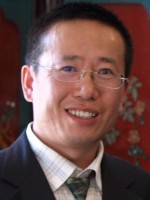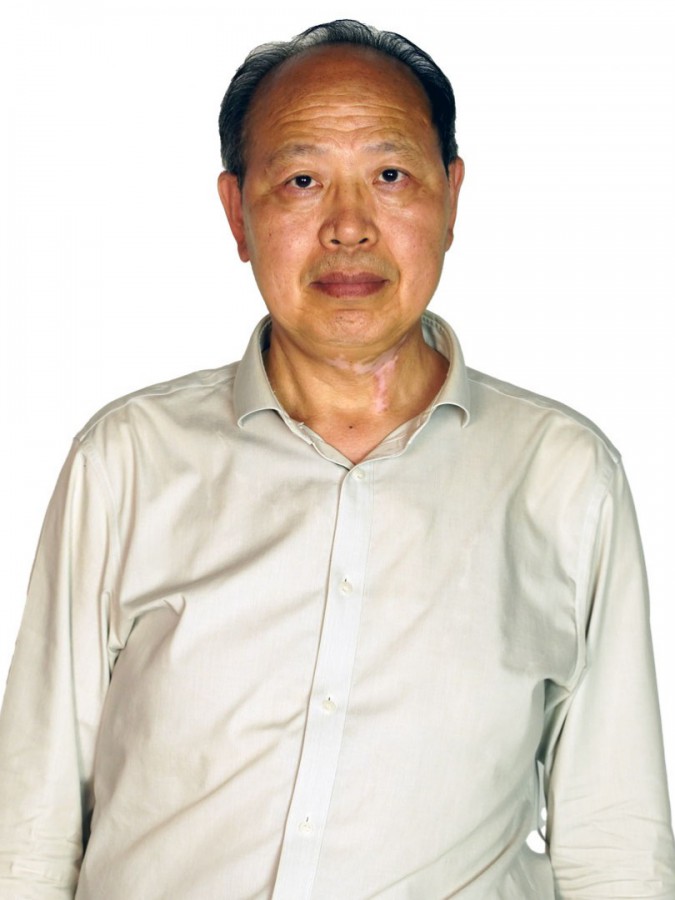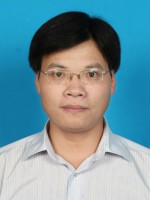abstract
A series of europium Eu- and La-doped complexes with two different crystal structures, namely, EuxLa1-x(phen)(2)(NO3)(3) [phen = 1,10-phenanthroline, x = 1.0 (1), 0.88 (2), 0.73 (3), and 0.52 (4)] and {[EuxLa1-x(phen)(2)(H2O)(2)(NO3)(2)](NO3)2(phen)(H2O)} [x = 0.28 (5) and 0.0 (6)], were synthesized in aqueous solution by using different Eu/La ratios.The complexes were characterized by single-crystal and powder X-ray diffraction, Fourier transform infrared spectroscopy, elemental analysis, thermogravimetry, and scanning electron microscopy. Compounds 1-4 and 5, 6 were obtained for Eu/La molar ratios higher than 5:5 and smaller than 3:7, respectively. The photoluminescence properties of these compounds depend on the crystal structure, which is determined by the Eu/La reactant ratio. Complexes 1-4 exhibit a quantum efficiency ( = 55%) and quantum yield (q = 31%) higher than 5 ( = 23% and q = 6%). The photophysical properties assessed by using the LUMPAC software are in good accord with the experimental values, particularly, the calculated (26%) and measured emission quantum yields (31%; excitation at the ligands at 255 nm).
keywords
METAL-ORGANIC FRAMEWORK; EMISSION QUANTUM YIELD; RARE-EARTH IONS; INTRAMOLECULAR ENERGY-TRANSFER; LANTHANIDE COMPLEXES; PHOTOLUMINESCENCE PROPERTIES; COORDINATION-COMPOUNDS; DIFFERENTIAL-OVERLAP; INTERMEDIATE NEGLECT; THEORETICAL APPROACH
subject category
Chemistry
authors
Yang, TH; Fu, LS; Ferreira, RAS; Nolasco, MM; Rocha, J; Carlos, LD; Shi, FN
our authors
Groups
G1 - Porous Materials and Nanosystems
G2 - Photonic, Electronic and Magnetic Materials
G6 - Virtual Materials and Artificial Intelligence
Projects
CICECO - Aveiro Institute of Materials (UID/CTM/50011/2013)
Harvesting the energy of the sun for a sustainable future (CENTRO-07-ST24-FEDER-002032)
acknowledgements
This work was financed by the Portuguese Fundacao do Ministerio de Ciencia e Tecnologia (FCT) (PTDC/CTM-NAN/119994/2010, grant to F.-N. S. and SFRH/BPD/74582/2010, grant to T.-H. Y.) and through the Aveiro Institute of Materials, CICECO project number UID/CTM/50011/2013, and when applicable co-financed by the Fundo Europeu de Desenvolvimento Regional (FEDER) under the PT2020 Partnership Agreement. T.-H. Y. acknowledges support by the NSF of Jiangsu Province (BK20140244), by the the project sponsored by the Scientific Research Foundation for Returned Overseas Chinese Scholars of the State Education Ministry, by the NSF for Universities in Jiangsu Province (13KJB150013), by the Science and Technology Bureau of Changzhou City (CJ20140031) and by the Jiangsu University of Technology (KYY13035). M. M. N. is thankful for a post-doctoral scholarship by the Project Mais Centro - PORC, project number CENTRO-07-ST24-FEDER-002032 (grant number BPD/UI96/3340/2014).








